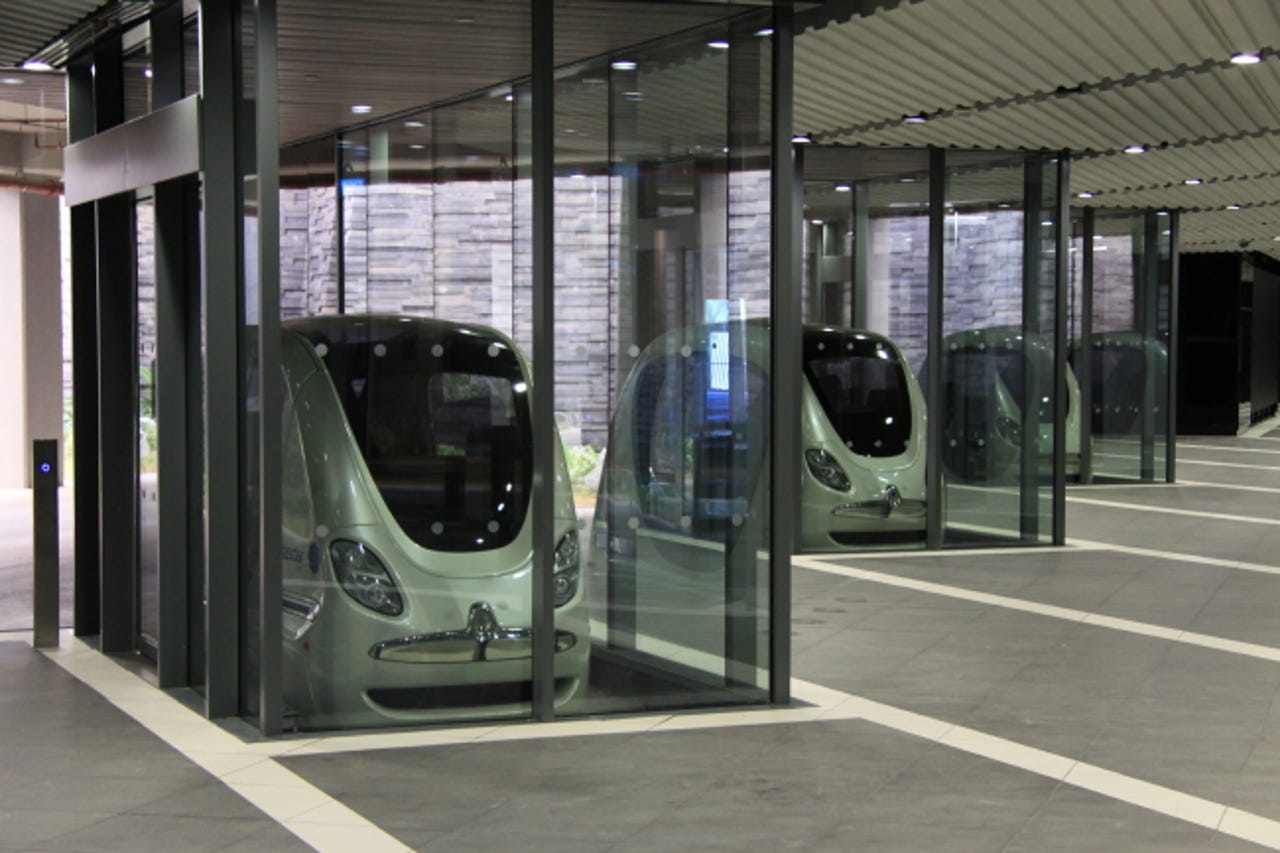Forget self-driving cars: Here's how driverless trains are moving ahead

Rather than run on rail track, 2getthere's automated people movers will operate on an elevated, bi-directional line.
In an age where Silicon Valley tech companies and traditional automakers conspicuously compete to develop driverless cars, advances in driverless trains continue to evolve unsung.
Operating with or without a supervising driver, automated trains regulate their own starting and stopping mechanisms and speed, while the newest models are fitted with complex onboard computers and rechargeable batteries. Some do not even need to run on rails.
Their drawbacks are hard to overlook, however. As a transportation mode, driverless trains are not versatile. They cannot navigate roads and remain limited to elevated, unobstructed tracks that are typical of urban metro lines, airport terminal connections, and amusement parks.
Yet driverless trains may become increasingly relevant as municipalities look for greener transportation for last-mile routes between a main transportation node, such as an airport, and a destination, like a city's downtown area.
Dutch tech firm 2getthere is among the companies trying to make evolved versions of driverless trains, called automated people movers, more attractive to municipalities and more accessible to users outside of downtown areas.
As the idea of driverless cars starts to entice urban dwellers, 2getthere sees an opportunity to attract people to its own automated vehicle technology, which has been available for some time.
"You have to convince people to leave their cars at home," says Robbert Lohmann, chief operations officer at 2getthere and one of the company's co-founders. Lohmann has over 18 years' experience in the automated people mover industry.
"The automated transportation system has to provide an added value to the passenger. Whether it's a quicker trip time, a lower cost, or a combination of both, preferably," Lohmann says.
In a project announced this month with Dubai, 2getthere will employ the world's largest fleet of non-rail-guided automated people movers to connect Dubai's inner-city metro system to one of the city's planned waterfront developments, Bluewaters.
Each of 2getthere's 25 automated people movers will carry up to 24 passengers to make the 2.5km (1.5-mile) trip in 4.5 minutes.
Rather than run on rail track, 2getthere's automated people movers will operate on an elevated, bi-directional line. Each vehicle will also have the capability to navigate public roads, but this is not currently specified in the Dubai project.
2getthere CEO and co-founder Carel van Helsdingen said in a statement: "The Bluewaters application demonstrates the capability of 2getthere's systems to provide significant capacities, making them a financially attractive alternative for the expensive, traditional rail-guided APM systems at airports and campuses."
The dedicated line will run parallel to a road bridge, competing with ground transportation for traffic.
But the large fleet size and a new type of rechargeable battery will keep the automated system almost always accessible to its users, says Lohmann.
The system's batteries will allow each vehicle to operate 1.5 hours between charges, while recharging will only take 10 minutes, maximizing the system's operating on-time. In addition, the batteries will minimize their vehicles' strain on Dubai's urban power grid.
The company's main challenge in the Bluewaters project is Dubai's harsh weather conditions. If the air-conditioning system fails, Lohmann says, a vehicle could heat up to 40C (104F) in one minute. He and his team will tap into their collective experience from a separate project in Masdar City, Abu Dhabi, to fine-tune their system's new air-conditioning system to Dubai's climate.
The success of the Bluewaters project may serve as an example to other cities to follow on how automation will bring value to their transportation grids.
"Cities and authorities at this time are still very much trying to come to grips with what automation and automated transit can mean for them," Lohmann says. "Cities are actively working on getting experience to be able to answer that question better and quicker."
Capelle aan den Ijssel, near Rotterdam, already has an automated people mover system in place from 2getthere. But starting next year, 2getthere will build a new loop into the city's line where 2getthere's automated vehicles will drive alongside road vehicles, sharing public roads with other traffic.
It could be the start of a trend that will overtake driverless cars.
VIDEO: Could driverless trains take lead in world of automated vehicles?
Read more on driverless vehicles
- Uber slams on the brakes, stops self-driving car tests
- Innovation committee toys with separate lanes for autonomous vehicles in Australia
- The downside to driverless cars: More time for email and conference calls
- Microsoft, Renault-Nissan want to stop you getting bored in your driverless car
- Otto (self-driving truck company): The smart person's guide (TechRepublic)
- Nio Eve concept debuts at SXSW, packed with AI and driverless tech (CNET)